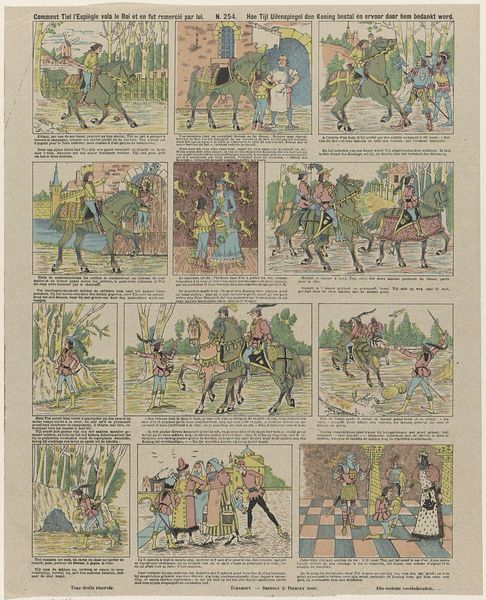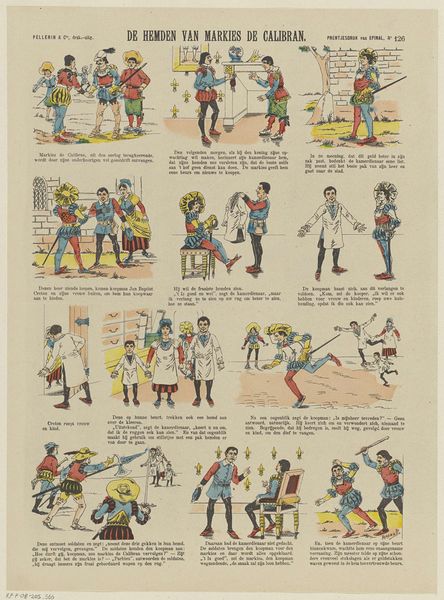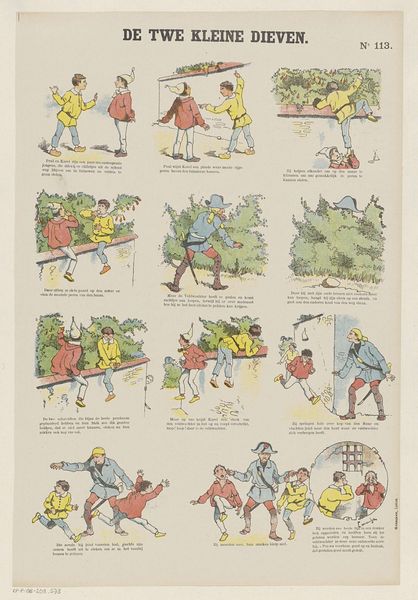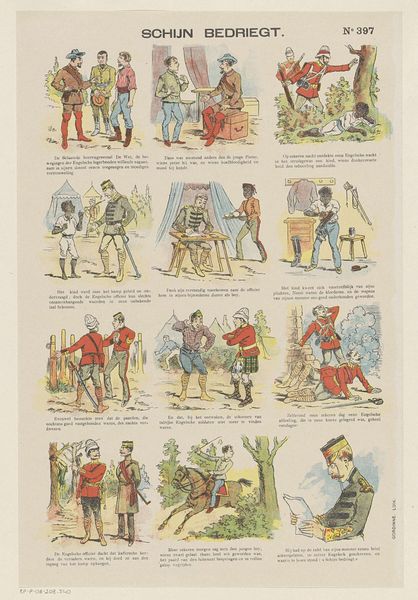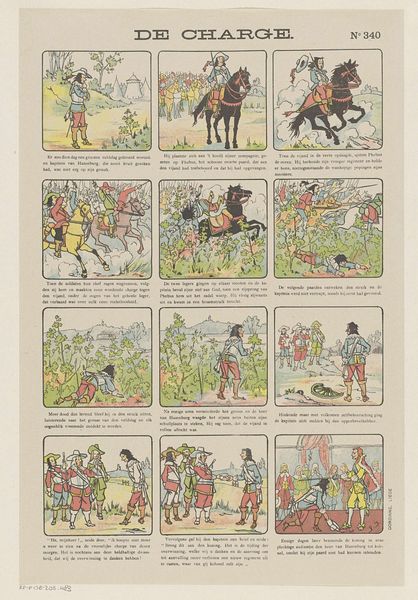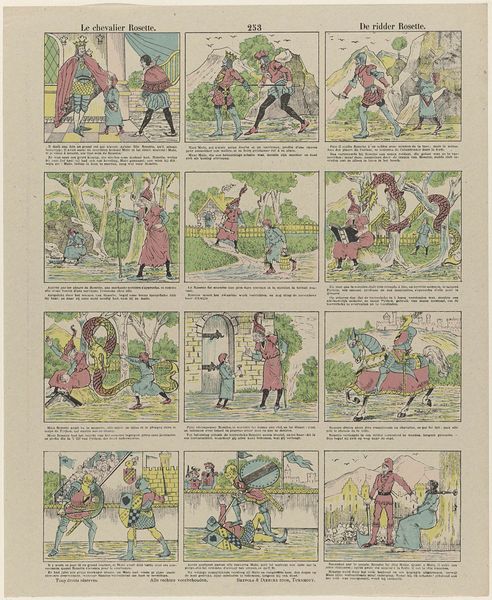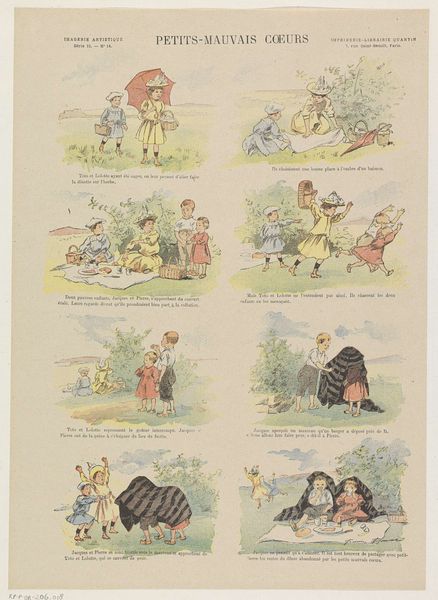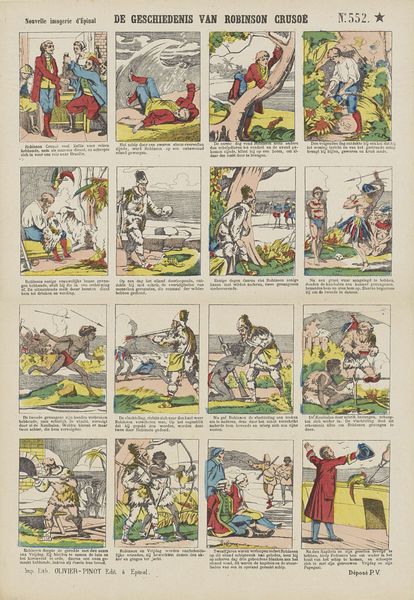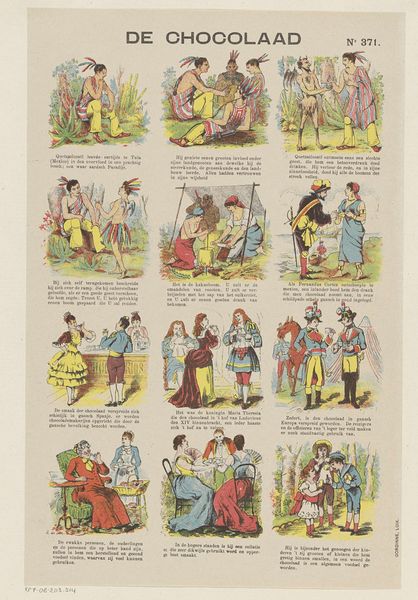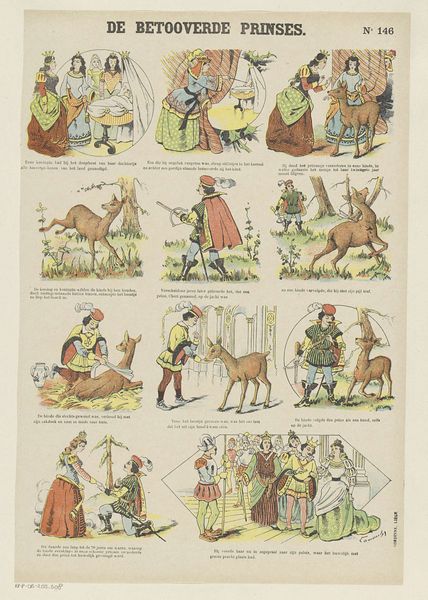
Dimensions: height 399 mm, width 294 mm
Copyright: Rijks Museum: Open Domain
Curator: This is "Coco, de goede aap," or "Coco, the good ape," a print dating from around 1902, made by an artist known as Camouche. Editor: It looks like an early comic strip! Each scene feels like a little snapshot, playful and bright despite some questionable imagery, it gives me a kind of wistful feeling. Curator: Considering the materiality, this print would have been produced for mass consumption, a reflection of the increasing accessibility of visual narratives at the turn of the century. The artist's labor and the printing process itself become part of the artwork's story, reaching a wider audience than a traditional painting might. Editor: It certainly tells a story. You see Coco, who appears to be an indigenous person referred to as an "ape," interacting with a European sailor, often in scenarios that seem…well, complicated by colonial power dynamics. It's hard to ignore those societal implications shaping the art. Curator: Precisely. We can consider how such images reinforced social hierarchies. These works were commonly found in public spaces, influencing attitudes and potentially perpetuating stereotypes. Think about the politics of visual representation here, the role it played in shaping perceptions of otherness. Editor: I wonder about Camouche's intent, though. Was it simply reflective of prevailing views, or did the artist have any critical perspective? Regardless, its role as an artefact speaks to the complex, often troubling history embedded in popular imagery. The very process of printing these and their circulation adds layers to this narrative. Curator: Absolutely, these aren't just illustrations, they're social documents. Examining them lets us analyze how colonial power infiltrated even seemingly innocent forms of entertainment. Editor: Seeing this brings the impact of social narratives through artistic expression sharply into focus, no matter how subtly crafted. Curator: For me, seeing art as labor helps in looking beyond aesthetics, urging a discussion around production, the dissemination of ideas, and the hands that shape them.
Comments
No comments
Be the first to comment and join the conversation on the ultimate creative platform.
